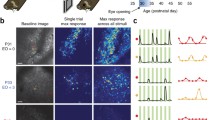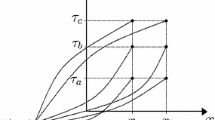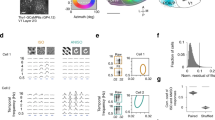Abstract
Width summation of complex neurones in cat striate cortex was assessed for moving sine-wave gratings. Summation was restricted in special complex neurones, approximately matched receptive field width in intermediate complex neurones and exceeded it in most standard complex neurones. Responses to preferred and opposite directions of motion were compared: 12 of 20 complex neurones showed similar directional bias for moving sinewave gratings and for single moving bars of either contrast polarity; 8 of 20 were similarly or more weakly direction-selective for bars than for grating patches, dependent on patch width. In two of these, this was despite the fact that the directional bias for gratings was invariant with patch width. In the remaining six, differences could be accounted for by progressive increase or decrease in directional bias for gratings, as grating patch width was systematically increased. In conclusion, directional bias of a substantial proportion of complex cells is determined by stimulus configuration.
Similar content being viewed by others
References
Bishop PO, Coombs JS, Henry GH (1971) Responses to visual contours: spatio-temporal aspects of excitation in the receptive fields of simple striate neurones. J Physiol (Lond) 219:625–657
Casanova C, Nordmann JP, Ohzawa I, Freeman RD (1992) Direction selectivity of cells in the cat's striate cortex — differences between bar and grating stimuli. Vis Neurosci 9:505–513
Dreher B (1972) Hypercomplex cells in the cat striate cortex. Invest Ophthalmol Vis Sci 11:355–356
Gilbert CD (1977) Laminar differences in receptive field properties of cells in cat primary visual cortex. J Physiol (Lond) 268:391–421
Hammond P (1978) Directional tuning of complex cells in area 17 of the feline visual cortex. J Physiol (Lond) 285:479–491
Hammond P, Ahmed B (1985) Length summation of complex cells in cat striate cortex: a reappraisal of the “special”/“standard” classification. Neuroscience 15:639–649
Hammond P, Mouat GSV (1986) Influence of stimulus length on directional bias of complex cells in cat striate cortex. Neuroscience 18:25–30
Hammond P, Munden IME (1990) Areal influences on complex cells in cat striate cortex: stimulus-specificity of width and length summation. Exp Brain Res 80:135–147
Hammond P, Smith AT (1982) On the sensitivity of complex cells in feline striate cortex to relative motion. Exp Brain Res 47:457–460
Henry GH (1977) Receptive field classes of cells in the striate cortex of the cat. Brain Res 133:1–28
Hubel DH, Wiesel TN (1962) Receptive fields, binocular interaction and functional architecture in the cat's visual cortex. J Physiol (Lond) 160:106–154
Author information
Authors and Affiliations
Rights and permissions
About this article
Cite this article
Hammond, P. Influence of stimulus width on directional bias in striate cortex. Exp Brain Res 98, 172–177 (1994). https://doi.org/10.1007/BF00229124
Received:
Accepted:
Issue Date:
DOI: https://doi.org/10.1007/BF00229124




